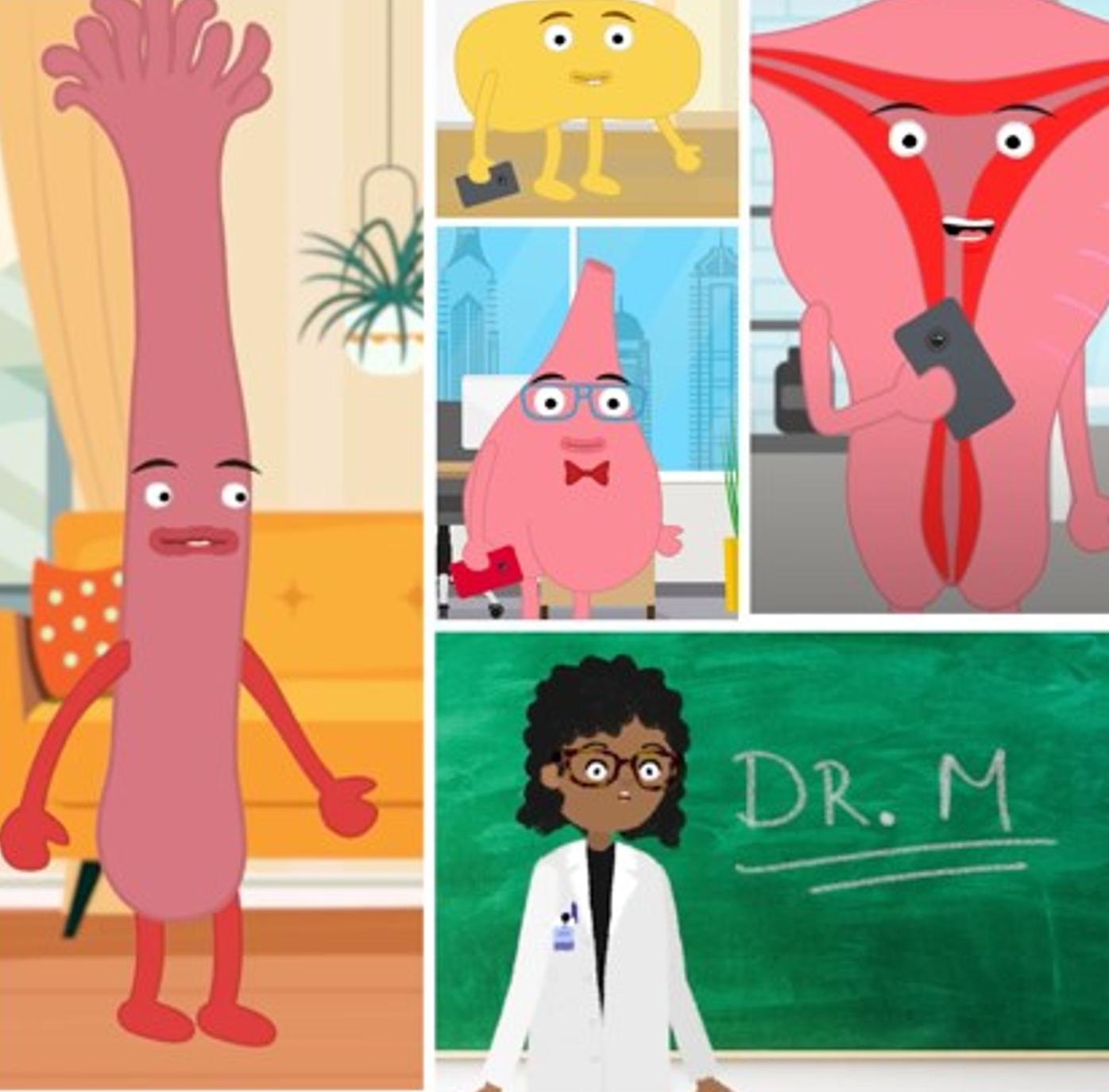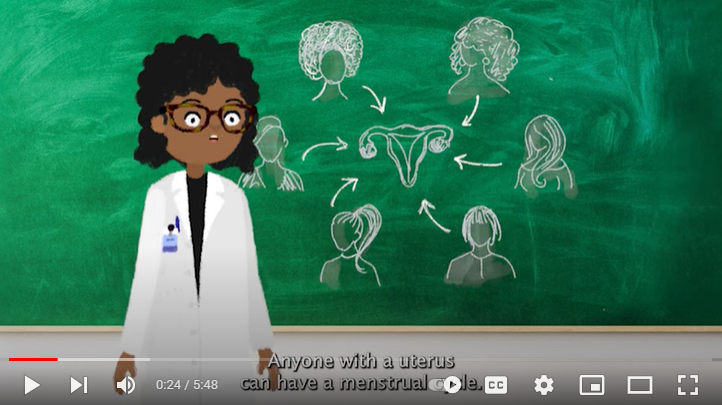 Shruthi Mahalingaiah, MD, MS, designed an exhibit for adults and kids alike that was on view at the Museum of Science in Boston this summer. It animated menstrual cycle anatomy and physiology in an effort to destigmatize menstruation. She is a reproductive endocrinologist, director of clinical research at the Mass General Fertility Center, and director of the Polycystic Ovarian Syndrome Clinic. She also has an appointment at the Harvard T.H. Chan School of Public Health in the Department of Environmental Health. In this question-and-answer article, Dr. Mahalingaiah talks about what inspired this installation, her hopes to destigmatize menstruation, and the future of this work.
Shruthi Mahalingaiah, MD, MS, designed an exhibit for adults and kids alike that was on view at the Museum of Science in Boston this summer. It animated menstrual cycle anatomy and physiology in an effort to destigmatize menstruation. She is a reproductive endocrinologist, director of clinical research at the Mass General Fertility Center, and director of the Polycystic Ovarian Syndrome Clinic. She also has an appointment at the Harvard T.H. Chan School of Public Health in the Department of Environmental Health. In this question-and-answer article, Dr. Mahalingaiah talks about what inspired this installation, her hopes to destigmatize menstruation, and the future of this work.
Q: What inspired this installation at the Museum of Science?
I am inspired by my students and their questions, and their desire to learn more about the complex process of menstruation. I am also inspired by my patients and the interactions I had when explaining the menstrual cycle to those coming in with menstrual irregularities or as part of their infertility workup and cycle treatment planning. Specifically, when I counsel patients about ovarian reserve, ovarian reserve testing, and preparation for an in vitro fertilization cycle, the tests that we do and the treatment that we support are all about menstruation biology.
Understanding where patients had insights and where they had questions informed what I've put into this animation with an amazing and remarkable team at the Museum of Science. I think the menstrual cycle is an extremely exciting process. In the exhibit, I tried to explain the activity happening in the ovaries and uterus to a broad audience so that menstrual education and menstrual health awareness can begin earlier, and not just when there is a concern about irregular periods or fertility.
Q. Why did you create this animation and exhibit?
The menstrual cycle is the most complex physiological process in our body, but there is a lack of awareness about what goes on in the ovaries and the whole body—including the brain. My goal was to set the groundwork for understanding the endocrine system and the different forms of communication that happen in our bodies between cells and between organs. In the endocrine system, communication happens through the secretion of hormones, the suppression of hormones, and hormone receptors that interpret that signal at a variety of places in the body.
I also introduced the concept of environmental endocrine disruption to better educate the public that hormones we make in our body can become dysregulated from pollutants in our water supply, air, food and other everyday chemicals such as personal care products and cleaning products. While not all synthetic chemicals and modern-day chemicals of convenience are a threat to our fertility, I think it's important to share this awareness so that people can make safer and healthier choices about what they put in their bodies and on their bodies, and what products they have in their homes.
Q. What do you hope this exhibit will help achieve?
I hope that this animation will serve to destigmatize and demystify the menstrual cycle and conversations around it. I hope this animation supports a fun and degendered approach to understanding the menstrual cycle as just a normal bodily function.
Q. Why do you think menstruation is cloaked in stigma and misunderstanding?
This question is important; there are many reasons why stigma is attached to menstruation. Many go back to historical and cultural frameworks and the status of women and people with a uterus. As we know, culture changes over time, and hopefully educational installations like this one help to create a future where we can discuss menstruation biology more openly. I believe understanding this aspect of basic biology will be important for the world going forward.
Q. How can I watch the menstruation animation?
You can watch the animation on the Mahalingaiah Lab YouTube page. It is a little less than 6 minutes long and includes subtitles in English.

Watch now
Q. What’s the future of this installation? Will it be on view at other places? Will it become curriculum at schools?
We are really excited to have concluded our first installation at the Museum of Science and now we can dig into the feedback from those who viewed it. We are in active discussions with a broad group of stakeholders about where it can land next, including talking with schools that are interested in having it available for their students. Some content may also find a home in a more permanent installation within the museum. We continue to apply for grants to help make this installation and information accessible to all.
Support work like this



